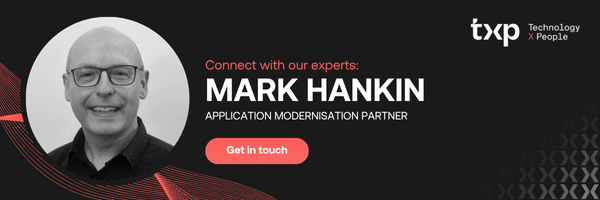Why Modernising Gen Applications Can’t Wait
The Hidden Burden of Legacy Gen Systems
Legacy Gen applications (CA Gen, COOL:Gen, AllFusion Gen, IEF, etc.) have served organisations faithfully for decades. But beneath the surface, these once-innovative platforms are now quietly draining resources, limiting innovation, and exposing businesses to escalating technical and financial risks.
As the cost of Gen licensing, maintenance, and specialist support rises, the illusion of “if it isn’t broken, don’t fix it” becomes increasingly dangerous. Standing still is no longer neutral, it’s a slow decline.
The Legacy Application Challenge
Gen platforms were once at the forefront of model-driven development. Today, however, they struggle to align with modern business needs and technology landscapes.
Key challenges include:
- Ageing technology: Limited compatibility with cloud, web, and microservices environments.
- Shrinking talent pool: Fewer skilled Gen developers, driving up contractor costs.
- Changing expectations: Businesses now require agility, automation, and rapid digital product delivery that legacy systems simply can’t support.
The True Cost of Standing Still
Remaining on Gen may feel like the “safe” option, but in reality, the costs compound each year.
- Licensing costs: Annual renewals are steep and rising.
- Resource scarcity: Skills are increasingly rare and expensive.
- Innovation bottlenecks: Integrating with cloud or analytics platforms is complex and fragile.
- Compliance exposure: Legacy technology increases operational risk and slows adaptation to new regulations.
Every renewal and maintenance cycle becomes an opportunity cost, a missed chance to modernise and unlock agility.
Modernisation as a Strategic Imperative
Modernising Gen applications is no longer optional, it’s essential to competitiveness and resilience.
Modernisation success depends on three pillars:
- Automated Code Conversion – Convert Gen models to COBOL, Java, or .NET using advanced automation to preserve business logic while accelerating transformation.
- Consulting-Led Strategy – Expert guidance to manage coexistence, training, governance, and integration planning.
- Holistic Portfolio Management – Rationalise and streamline applications while aligning the roadmap with business goals.
Business and Technical Benefits
Organisations that modernise experience measurable returns:
| Business Advantage | Technical Impact |
| Automated, predictable delivery | Lower risk and faster implementation |
| Improved agility | Simplified updates, streamlined testing |
| Future-proof architecture | Cloud, mobile, and web readiness |
| Reduced dependency on niche skills | Easier onboarding and broader developer base |
| Strategic alignment | Modern roadmap aligned to enterprise priorities |
From CA Gen to COBOL
A global multi-line insurer transformed its commission platform from CA Gen to COBOL in just nine months. The result?
- Significant reduction in maintenance costs
- Improved compliance readiness
- Retained core business logic via automation
- Long-term sustainability with modern, maintainable COBOL code
This project proved that modernising Gen is not just achievable, it delivers immediate operational and strategic value.
A Practical Roadmap for Gen Modernisation
A structured approach ensures success and minimises risk:
- Discovery & Assessment: Audit Gen assets, dependencies, and costs.
- Strategy Definition: Build a modernisation roadmap aligned with business needs.
- Execution with Automation: Use automated tools and expert validation to ensure accuracy and speed.
- Governance & Evolution: Establish governance, measure performance, and build in-house capability.
The Cost of Inaction
Gen applications may still run, but they no longer run your business forward. The longer organisations delay modernisation, the greater the exposure to financial, operational, and reputational risk.
Modernisation is more than a technical exercise, it’s a business necessity. The true cost of standing still isn’t measured in today’s expenses, but in tomorrow’s missed opportunities.

